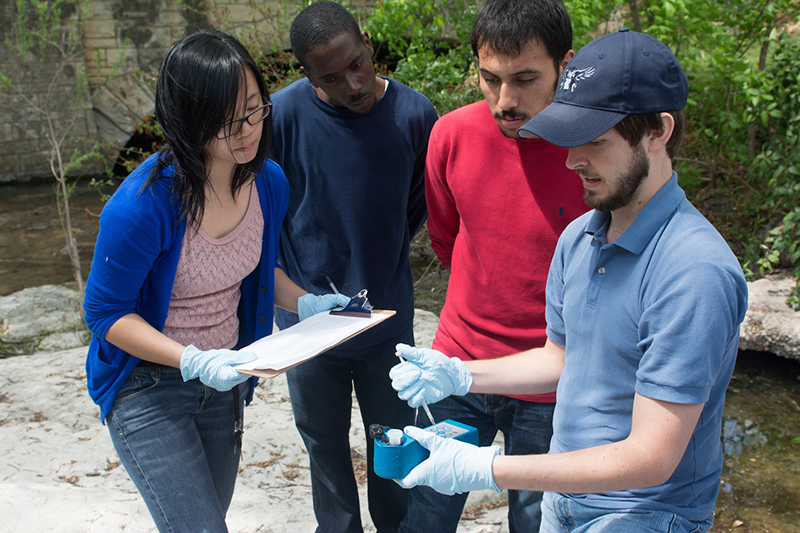 The University of Texas at Austin is introducing a new Bachelor of Science degree in environmental engineering. The program, which will be offered by the Department of Civil, Architectural and Environmental Engineering in the Cockrell School of Engineering, includes a multidisciplinary curriculum focused on creating solutions to environmental challenges facing the planet and protecting human health and quality of life.
The University of Texas at Austin is introducing a new Bachelor of Science degree in environmental engineering. The program, which will be offered by the Department of Civil, Architectural and Environmental Engineering in the Cockrell School of Engineering, includes a multidisciplinary curriculum focused on creating solutions to environmental challenges facing the planet and protecting human health and quality of life.
Although the program’s first freshman class will begin in fall 2017, the quality of the Cockrell School’s current environmental engineering undergraduate courses has already garnered a No. 7 ranking in this area by U.S. News & World Report.
The new degree takes a holistic approach to preparing the next generation of environmental engineers, allowing students to build a strong foundation in engineering and natural sciences while applying their engineering skills to environmental issues facing communities and society.
Beginning in the first year, students will address local and global topics through active engagement in project- and service-based learning. Students can specialize in one of four areas: air, climate and energy; sustainable water systems; water resources and the environment; or contaminant fate and transport. The breadth of the curriculum allows students to earn 18 semester hours of approved technical coursework within the environmental engineering areas of most interest to them.
The school’s graduate program in environmental and water resources engineering is one of the most respected in the world and is currently ranked No. 4 in the nation by U.S. News & World Report. With the launch of the new undergraduate program, students now have the opportunity to earn a Bachelor of Science degree in environmental engineering from more than 20 tenure-track faculty members who are renowned educators, researchers and thought leaders.
“Humankind faces grand challenges associated with climate and environmental issues,” said Richard Corsi, chair of the Department of Civil, Architectural and Environmental Engineering. “For over half a century, our faculty members have been international leaders in graduate education and research relevant to environmental issues of the time. I am confident that our new undergraduate program will produce the next generation of environmental innovators and leaders.”
Environmental engineers protect the natural environment and are involved in identifying critical environmental issues, developing new technologies and processes to mitigate those issues and helping shape policy to drive resolution. They work to create solutions to global issues such as clean drinking water and clean air by applying basic scientific principles and systems-level thinking to understand and build sustainable natural and engineered systems.
The application of systems-level thinking to address environmental solutions is a key paradigm of the new program. While students who enter the program will obtain a broad background in engineering, mathematics and science, the multidisciplinary tracks will also allow students to take courses across other colleges and schools at UT Austin and integrate their knowledge to address complex issues.
“Environmental engineers — especially those with collaborative skills and a multidisciplinary background — are needed to solve some of our most pressing global problems,” Corsi said. “This program will allow us to prepare and inspire them better than ever before.”
For more information about the program, visit caee.utexas.edu/environmental.







